8 Amazing New Military Technologies
In light of increasing tensions in global hot spots, U.S.
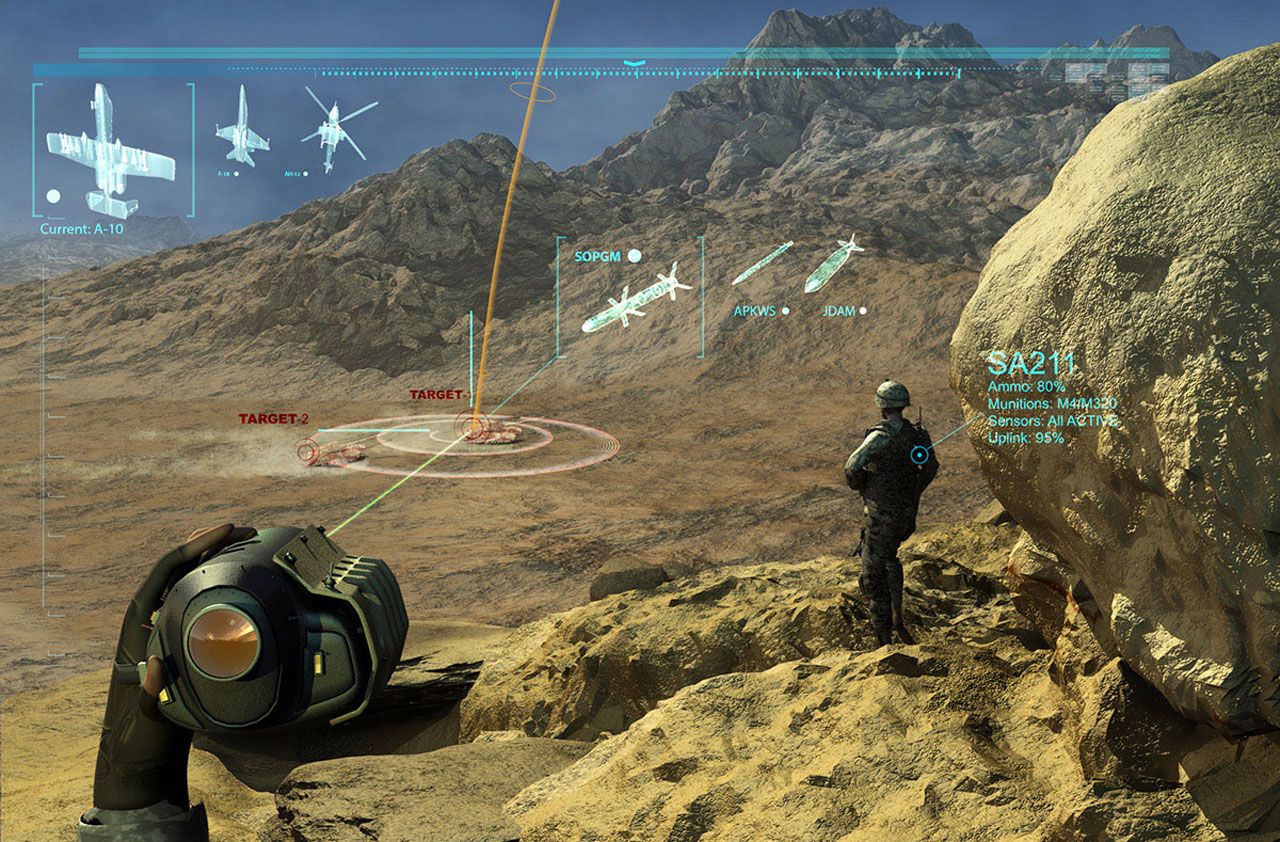

In light of increasing tensions in global hot spots, U.S. military R&D is gaining more urgency. The U.S. will spend nearly $80 billion this year to create new weapons, armor and related gear, up 5% from last year. Even higher spending is planned for 2017.
The next array of weapons to outgun the old and explore new discoveries in science and security are coming from defense contractors, university labs and small tech start-ups with big aims. They serve not so much to amaze war tech geeks but to protect and defend...and win.
Some work in the air, some on the ground or water, and others in space. They reflect the innovation, curiosity and commitment of the world’s best engineers and scientists. Here’s a glimpse of work under way at companies and labs partnering with the Defense Advanced Research Projects Agency, the science and weapons development arm of the Defense Department.
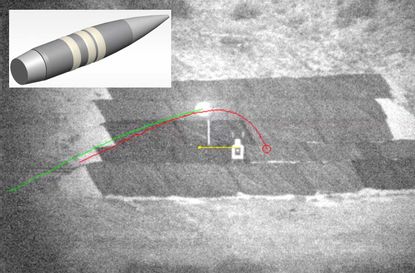
Self-Steering Bullets
Packed with tiny sensors, a .50-caliber bullet under development can change course rapidly in midair, potentially giving even a mediocre shooter sniperlike accuracy, with the ability to hit moving targets with ease.
Plus, while the cost of these advanced rounds is still unknown, they are sure to be cheaper than the rocket-propelled missiles whose role they could sometimes fill. DARPA, which is working on the EXACTO project with military contractor Teledyne Technologies and ammunition maker Orbital ATK, is keeping mum on exactly how the bullet changes its flight path. A competing effort from the Department of Energy’s Sandia Labs uses a laser to indicate the target while small fins on the bullet (also .50-caliber) steer it in flight.
Both programs are still in testing.
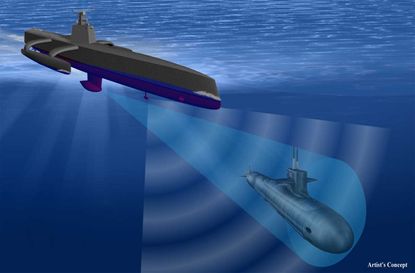
Unmanned Submarine Hunter
More and more countries are deploying ultraquiet submarines that can lurk undetected close to shore. That prospect worries defense officials, who are looking to one of DARPA’s larger projects, the Anti-Submarine Warfare Continuous Trail Unmanned Vessel (ACTUV), also known as Sea Hunter.
Think of it as a water-based drone that can hunt submarines for months at a time without anyone having to change watches, at least aboard the vessel. Equipped with sonar, radar and other synthetic vision systems, the ACTUV will be able to move through narrow channels and shipping traffic autonomously.
- Raytheon is delivering the ACTUV’s sonar; Leidos, the boat itself. A prototype is undergoing sea trials.
- SEE ALSO: Great Tech Forecasts of the Last 90 Years
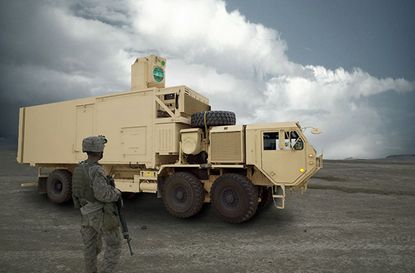
Laser Cannons, for Real
The iconic science-fiction weapon is closer than ever to reality. The Navy’s testing of its Laser Weapon System aboard the USS Ponce in the Persian Gulf went swimmingly, and the Navy expects to deploy even larger laser weapons aboard ships to protect them from threats such as small attack boats and drones.
Meanwhile, on land, Boeing and the Army are working on a truck-mounted laser that can zap incoming threats such as mortar shells or drones. This program has the catchy name HEL MD, for High-Energy Laser Mobile Demonstrator. Competitor Lockheed Martin is also looking for a piece of the Defense Department’s ray gun business with its ATHENA system.
One of the many benefits of lasers is that they can fire repeatedly for minimal cost—just the diesel to power the truck-mounted generator that provides the bursts of energy the laser concentrates downrange.
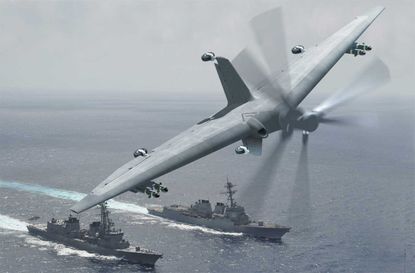
Every Ship an Aircraft Carrier
Smaller Navy ships such as destroyers and frigates long for the eyes in the sky that carrier groups have with their fleets of planes and helicopters—and drones.
While there are plenty of small unmanned aerial vehicles already in service, the hitch for using them on the water has been launching and retrieving them in rough seas and on small decks. DARPA’s TERN program (it stands for “Tactically Exploited Reconnaissance Node” but handily evokes a seabird) aims to fill that niche with an aircraft that can take off and land on its tail.
Twin counter-rotating propellers lift it into the air. Then it switches to horizontal flight to cruise the skies for threats, relaying video, radar and other images back to the ship. To land, it reverses the process.
DARPA plans to build a full-scale demonstrator system. Northrop Grumman is the lead contractor.
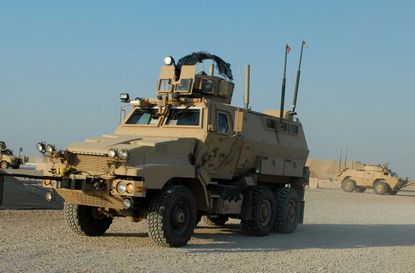
Plasma Protection Field
- Boeing has filed a patent for a system that would protect vehicles from blast damage by creating plasma fields. The idea is to create an ionized air field that would deflect the incoming blast. What it can’t do is stop an incoming projectile such as a rocket-propelled grenade or antitank missile, but existing active-protection systems, such as the Army’s Iron Curtain, are designed to handle those.
Curb your vision of a dome appearing around the vehicle as in Star Wars—the Boeing system would only defend in the direction of the incoming blast.

Invisibility From a Squid
Current camouflage can hide soldiers and their vehicles from human sight but is close to useless against ever-more-common infrared vision systems. Scientists at the University of California, Irvine hope to fix that with what they call invisibility patches, based on a structural protein that common squid—the ones that end up as calamari—use to change the color and reflectivity of their skin.
This protein, called reflectin, functions in the same wavelengths as night vision systems, and therein lies its promise. Scaling up this discovery to a useful military application could be many years off, however.
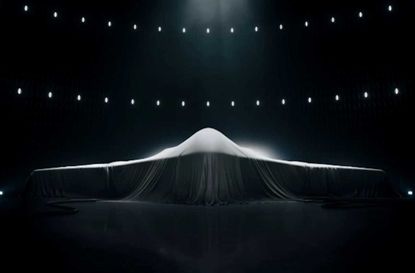
Extra-Stealthy Bomber
While still a concept, the next-generation Long-Range Strike Bomber, a multibillion-dollar, multiyear prize for contractors, is already in the research phase. Development will take many years. Northrop Grumman and a host of subcontractors and engineering companies will benefit.
The goals are total stealth, high speed and heavy bomb cargo capacity. The plane will ultimately replace the aging fleet of B-52s and compliment the small fleet of B-2 stealth bombers. Stealthy skin on the airframe of the bomber will be made with hardened reflective material to not only avoid radar but also change colors to reflect surroundings. The plane, as envisioned, will change to blue for daytime sky, white for cloud cover and black for night. There’ll also be precision guidance in the bomber, with high-military-grade gyroscopes. The gyroscope research, partly funded by DARPA, is under way at Northrop Grumman’s facility in Salt Lake City. The work on the skin is being done with Northrop and Raytheon.

Satellite Melter
What’s one way to remove an enemy satellite? Melt it. A DARPA-funded program with Northrop Grumman and Raytheon is developing a satellite that will be designed to hunt and track an adversary’s defense satellite. If done right, it will work by simple physics, reflecting a sunbeam on the enemy satellite that will, over the course of weeks, heat the opposing satellite just enough to make it fall out of orbit and burn up on reentry into the upper stratosphere.
It won’t look like a brilliant strike in the sky. In fact, it won’t even be seen. That’s the idea. It’s a five-year project with a demo in 2018 and a launch expected in 2021.
Get Kiplinger Today newsletter — free
Profit and prosper with the best of Kiplinger's advice on investing, taxes, retirement, personal finance and much more. Delivered daily. Enter your email in the box and click Sign Me Up.

-
 Seven Secrets to Building Wealth (That You Can Implement Today)
Seven Secrets to Building Wealth (That You Can Implement Today)The best-kept secrets to building wealth aren't so secret after all.
By Kiplinger Advisor Collective Published
-
 This Stock Market Risk Could Shrink Your Retirement Nest Egg
This Stock Market Risk Could Shrink Your Retirement Nest EggThis little-known risk of a down market can cause lasting damage to your portfolio.
By Adam Shell Published
-
 Text-Generating AI Faces Major Legal Risks: Kiplinger Economic Forecasts
Text-Generating AI Faces Major Legal Risks: Kiplinger Economic ForecastsEconomic Forecasts Major legal risks to text-generating artificial intelligence: Kiplinger Economic Forecasts
By John Miley Published
-
 32 Ways to Make Money in 2025
32 Ways to Make Money in 2025business Check out these cool side hustles to earn bonus bucks this year.
By Bob Niedt Last updated
-
 12 IRS Audit Red Flags for the Self-Employed
12 IRS Audit Red Flags for the Self-Employedtaxes If you are self-employed, minimize the odds of an IRS audit by avoiding these audit triggers.
By Joy Taylor Last updated
-
 Business Cost Outlooks for 2022: Eight Key Sectors
Business Cost Outlooks for 2022: Eight Key SectorsEconomic Forecasts What’s in store for all sorts of business costs in 2022?
By The Kiplinger Washington Editors Published
-
 PPP Loan Basics for Small Business Owners
PPP Loan Basics for Small Business OwnersCoronavirus and Your Money Although uncertainty and confusion have surrounded the Paycheck Protection Program since its launch, that shouldn't stop small business owners from participating in the loan program, which was just extended to May 31.
By Rodrigo Sermeño Published
-
 Add a VPN to Surf the Internet Safely
Add a VPN to Surf the Internet SafelyTechnology To help you fight identity theft, consider adding a VPN.
By Emma Patch Published
-
 "Above-the-Line" Deductions for Your 2021 Tax Return
"Above-the-Line" Deductions for Your 2021 Tax ReturnTax Breaks If, like most people, you claim the standard deduction instead of itemized deductions on your return, there are still many other tax deductions available that could save you a lot of money.
By David Muhlbaum Published
-
 The Biden Tax Plan: How the Build Back Better Act Could Affect Your Tax Bill
The Biden Tax Plan: How the Build Back Better Act Could Affect Your Tax BillPolitics Depending on your income, the Build Back Better Act recently passed by the House could boost or cut your future tax bills.
By Rocky Mengle Published
